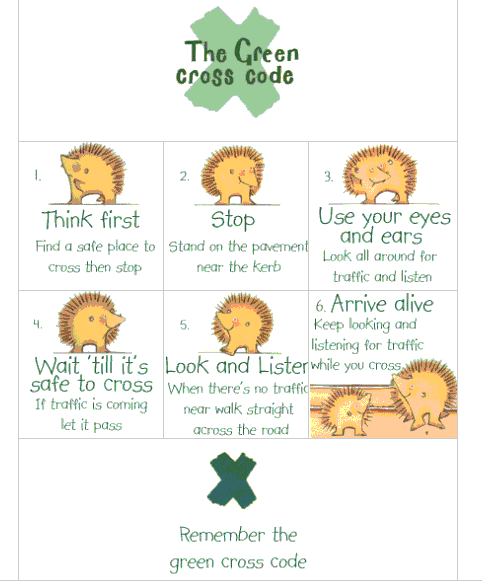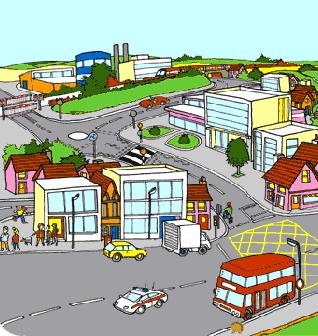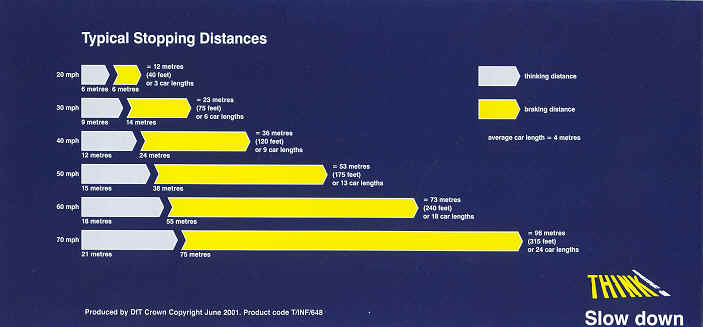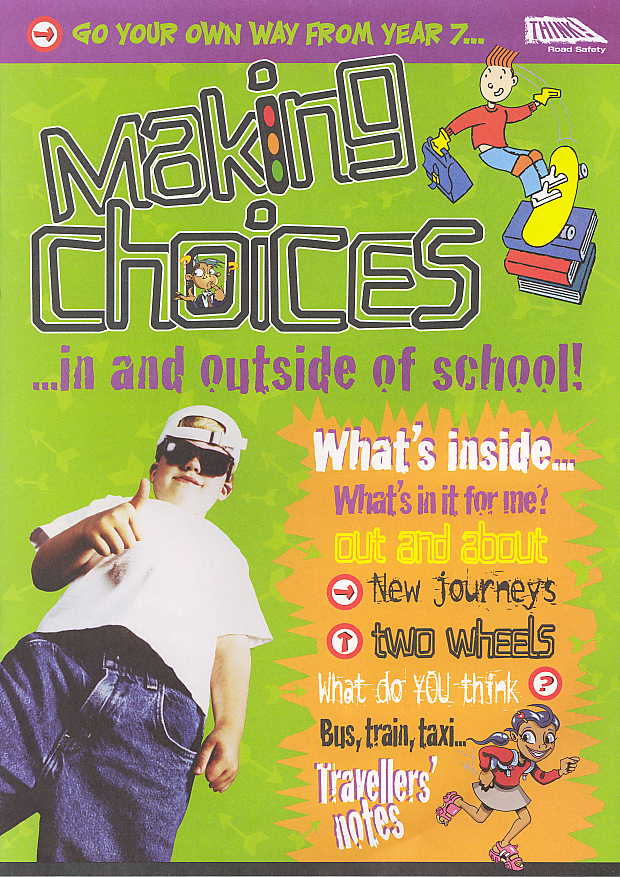
Road Safety in Key Stage Two

The Key themes for Years 3, 4, 5 and 6 are:
The Green Cross Code / Arrive Alive
You probably already know the basics of the Green Cross Code - STOP, LOOK and LISTEN - but now it is time to find out a bit more.
Always use the Green Cross Code to help you cross roads, even if you are with an adult.

 If you want to know more about the hedgehogs
adverts, play games or take a look at Arrive Alive (the highway code
for young road users) visit the hedgehogs website.
If you want to know more about the hedgehogs
adverts, play games or take a look at Arrive Alive (the highway code
for young road users) visit the hedgehogs website.
If you would like the related activity books and stickers, and a free copy of the children's highway code, ask your teacher to order them from us.
The highway code for young road users tells you what all road users (drivers, horse riders, cyclists and pedestrians) should be doing.
Finding a safer place to cross will make life a lot easier, although you still need to STOP, LOOK and LISTEN! Safer places include:
Zebra
Crossings,
Pelican Crossings,
Puffin Crossings,
School
Crossing Patrols,
Footbridges,
Subways and
Refuges.
See if you can find out how you should use each of these places.
Less
safe places to cross
If there are no safer places to cross, try to find a straight, clear section of
road. Click here to view
some places you should try not to cross near.
Be especially careful if there is a bus lane, or it is a one way street.

•What can increase stopping distances?
The car (worn brakes, extra weight, bald tyres etc)
When you are travelling in a car you must always wear a seatbelt. If you are small (under 1.5m / 5ft) you may need a special seat or cushion to make the seatbelt fit.
Everyone in the car should wear their own seatbelt.
In a crash at 30mph, if you are not wearing a seatbelt, you will hit the front seat and anyone in it, with a force of between 30 and 60 times your own body weight. Such an impact could result in death or serious injury to both yourself and the person in the front seat. If you are in the front seat without a seatbelt you could be thrown through the windscreen.
Always get out of the car on the pavement side, so you don't end up standing in the road.
 Then you might like to ask your
teacher to order you copies of "Making Choices", a FREE magazine to
help you stay safe when travelling independently.
Then you might like to ask your
teacher to order you copies of "Making Choices", a FREE magazine to
help you stay safe when travelling independently.